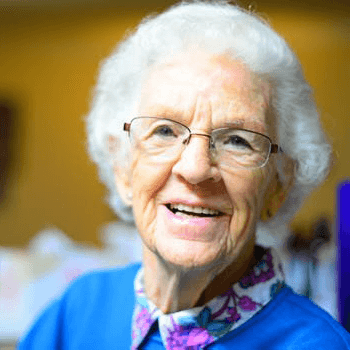Nine tips for growing old at home

In order to live comfortably at home, it’s necessary to take an inventory and make home modifications.
By Linda Vena, Occupational Therapist, Elder Service Plan, and Julie Adams, Social Worker, Elder Service Plan.
As older adults age and live longer, it's no secret that many choose to remain living in their own homes for as long as possible. In order to live safe and comfortable at home, it's necessary to take an inventory and make modifications when necessary. In celebration of September as Healthy Aging month, team members of Cambridge Health Alliance's PACE program are sharing advice for older adults. Below is a list of items to consider when choosing to live at home.
- One of the riskiest activities for seniors is getting in and out of the shower. To be safe, add a grab bar to the entrance of the shower and consider another inside the shower to help steady yourself. A bar near the toilet may help too.
- If using a toilet becomes a problem, consider a commode instead. It is a frame with a seat that goes over the toilet and has arms. The arms give you something to push off of and the increased height makes it easier to get on and off.
- If you have less-than-perfect balance or fatigue easily, a shower chair can enable you to shower more safely.
- A handheld showerhead allows the faucet to be held in the hand. It is attached to your shower head by a three or six-foot cord. If you shower sitting down, it enables you to reach all areas.
- Many people are fearful of falling when getting in and out of bed. A bed rail gives you something to hold onto and steady yourself as you stand up. It also makes it easier to get in bed because you can use it for leverage.
- Your bed height might need adjustment. A taller box frame or mattress is easy to fix. Is it too high where you feel like you are jumping to get into bed? You could do the reverse and look at shorter box frames and mattresses.
- One easy and cost-free way to be safer at home is to clear pathways. This involves removing clutter and making sure you have enough room to walk. Other areas to address include removing throw rugs, since they are tripping hazards, and placing electrical cords around the perimeter.
- By age 75 we require four times as much light to see sufficiently. Lighting is not something most of us think about often, but increased wattage can prevent falls and injury. Older adults should try to ask for assistance when changing light bulbs.
- Finally, stairs might be a major barrier and a simple railing makes a big difference. A railing on one side of the stairs, or on both, make using the stairs go from daunting to doable.
Do you know someone 55+ who needs extra support to stay healthy in their home and community? If so, meet the team at CHA's PACE program and call 617-575-5850. CHA can help older adults who have comprehensive health and social needs that affect their daily lives.
Disclaimer
This articles provide general information for educational purposes only. The information provided in this article, or through linkages to other sites, is not a substitute for medical or professional care, and you should not use the information in place of a visit, call consultation or the advice of your physician or other healthcare provider.